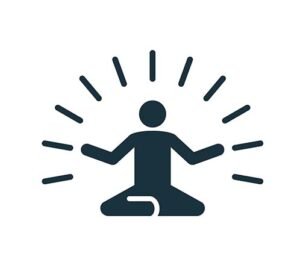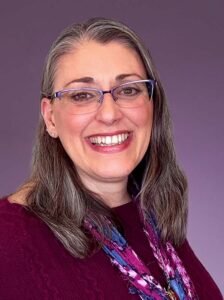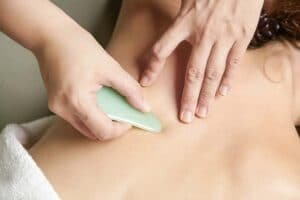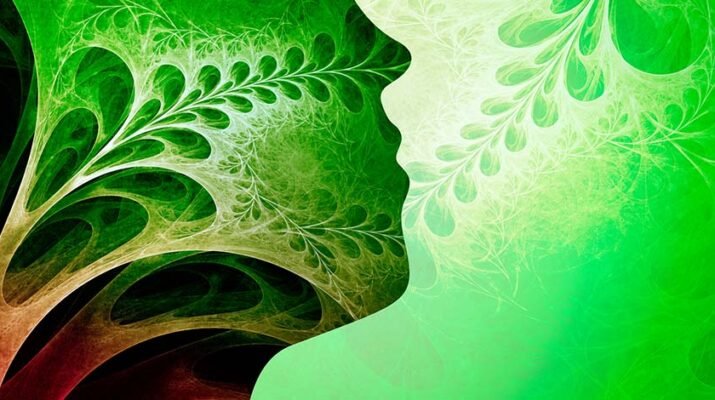By Deborah Jeanne Sergeant
You may be familiar with many of the more commonplace complementary health modalities offered by a functional medicine clinic. However, some are less well-known than others. These are all available in the Central New York area.
 1. Dry Brushing
1. Dry Brushing
• What it is: The practitioner moves a coarse, natural-fiber bristle brush in a pattern on the skin over the whole body either dry or with an oil.
• How it’s used: “It’s beneficial on a few levels,” said Amanda Wells, licensed massage therapist with CNY Healing Arts, based in Syracuse. “The most noticeable is it’s exfoliating to the skin, resulting in smooth, radiant skin. It gets the blood flowing. It supports the lymph system, which is in charge of the immune system. It gets lymph moving. It helps with the immune system. We also use an almond oil which is high in vitamin E — rosemary-peppermint oil is optional. It opens the skin and nourishes it.”
• Why it’s used: “It’s nice to do in the winter as we get stagnant in our bodies,” Wells said. “It helps our health in the winter when we’re less active. It’s also good for warmer months as it helps with removing dead, dry skin, which is nice when you’re wearing shorts.”
• Caveats: “We don’t do it during pregnancy,” Wells said. “If someone has open skin, we wouldn’t want to do it then or frail, thin skin.”
2. Hot Bamboo Massage
• What it is: “It’s similar to hot stone massage, except we use bamboo sticks,” Wells said.
• How it’s used: “We can get a lot more pressure with the bamboo,” she added. “The ends are for trigger points and they’re slid across the skin.”
• Why it’s used: “It is good for deep tissue and trigger point modality.”
• Caveats: “It is not good for people sensitive to pressure.”
3. Pranic Healing
• What it is: “It’s similar to reiki, as it’s an energy therapy,” said Heidi Baldwin, practice manager and board-certified integrative nutrition holistic health coach at Integrative Medicine of Central New York. “Clients lie on a massage table. It can be hands-on, but doesn’t have to be.”
• How it’s used: “It uses universal life force energy to balance a client’s energy,” she added. “If there are areas of congested energy, pranic healing can remove that. That typically is not done in reiki.”
• Why it’s used: “If there’s anything a person feels anxious or depressed about or they aren’t sure why, or for people with trauma in their past, this can help,” she said. “If a patient is on herbals or medications, this can assist in their physical healing.”
• Caveats: “A client must have the willingness to accept the healing that comes from it,” she said.
 4. HeartMath
4. HeartMath
• What it is: “It is one means of trying to balance the sympathetic and parasympathetic nervous system,” Baldwin said. “Many of us are in high stress situations, fight or flight mode. This is a biofeedback technique to bring us more in the relaxed or parasympathetic state. You can train through seeing the coherence waves of the heart and different colors on a phone, laptop or a device that’s called an EM Wave and it gives you feedback about how your state of being is and shows you how to go from a fight-or-flight state into a relaxed state by using breath, thoughts and emotions of love and gratitude.”
• How it’s used: “There’s a strong connection between the heart’s coherence and how it beats and how it translates to the brain’s response,” she added. “We are feeling very anxious in that fight-or-flight mode. We cannot think clearly and it is a high cortisol state, which is not good for our blood pressure and health and wellbeing if that is a constant state of being.”
• Why it’s used: “It’s for anyone who is highly stressed, particularly those who are chronically highly stressed and have no good means to control it,” she said.
• Caveats: “There are no contraindications because everyone can breathe and think and feel,” Baldwin said.
5. Gua Sha
• What it is: “It’s a soft tissue technique,” said Reni Fairman, nationally certified and licensed acupuncturist and owner of Origin Acupuncture in Auburn. “We use a gua sha spoon or other specific tool made of jade or other materials to scrape the skin in one direction.”
• How it’s used: “We’re doing this to free up the tissues below if there’s any stagnation or fluids and blood not in proper circulation,” she added. “It creates a little therapeutic trauma.”
• Why it’s used: “The fluids may be stuck and the tissues may feel stiff. Some feel pain or discomfort and this frees up those tissues so they’re supple.”
• Caveats: “We don’t do it over bony prominences, only soft tissue. We do it only to the patient’s tolerance. If someone had a large varicosity, we may need to go in a different area. I wouldn’t do it on someone who’s pregnant, depending on where they are in gestation. If there’s a clotting disorder or if someone’s on a blood thinner, we’d want to know that. We wouldn’t do it over any damaged skin.”
 6. Tuina
6. Tuina
• What it is: “It’s a soft tissue modality. You can think of it as an Eastern version of massage. You’re fully clothed. There’s no lotion. I use my hands on the body. It has the same benefits as a traditional Swedish massage. I’m also thinking about acupuncture channels and may apply acupressure on channels to open up communication in that channel.”
• How it’s used: “If you don’t want needles, you can have tuina,” she added. “Some people don’t want cream or to get undressed as with massage.”
• Why it’s used: “You can use it if you’re in pain.”
• Caveats: “It’s a short session, maybe 15 minutes. It’s more general and not as specific as a myofascial massage or if someone wanted deep tissue of a specific area. It’s a broader tool.”

